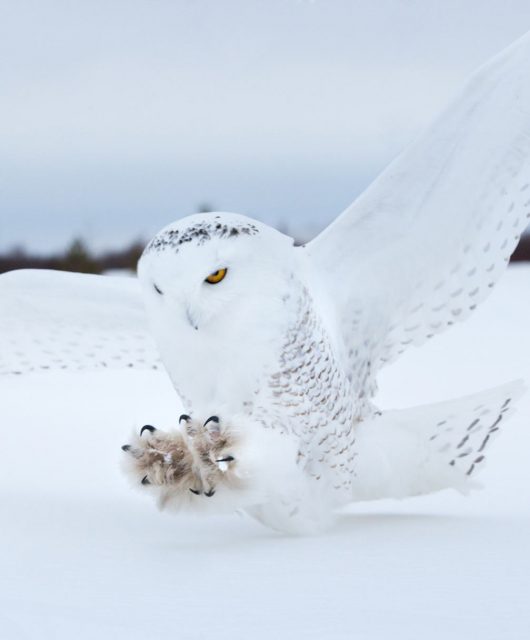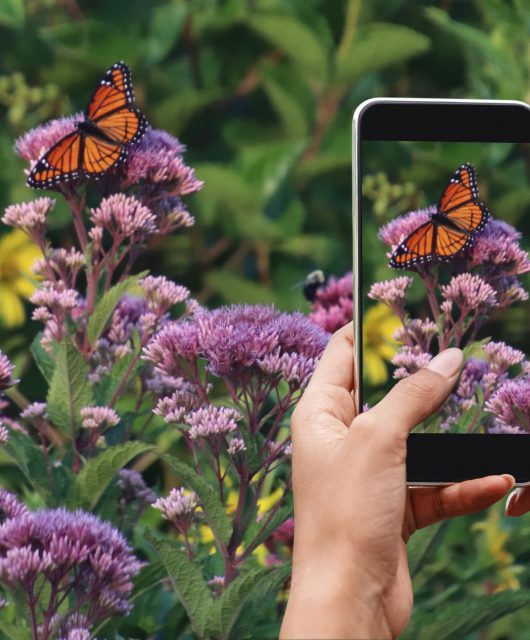Celebrating Pride Month With a Nonbinary Deep Dive
Pride Month is a celebration and commemoration of 2SLGBTQIA+ identities, culture, and a memorialization of the protests both past and present to ensure the rights and safety of those who identify outside of gender and sexuality “norms”. This month let’s dive a little deeper into the gender nonbinary – and how it’s represented in wildlife.
Technically most animals don’t experience gender in the same way as humans. For now, let’s take a look at wildlife that exists outside of the sex binary!

One of the most common of these deviations are hermaphrodites. These creatures possess both male and female reproductive organs throughout their life – either simultaneously or sequentially. An example of this is the Broad-banded Forestsnail (Allogona profunda), a large terrestrial snail now endangered to the extent that it’s only found (within Canada, at least) on Point Pelee and Point Pelee Island. Like many other species of snail, the Broad-banded Forestsnail has both sets of reproductive organs, and both ‘genders’ of the snail reproduce using the same methods. Many other snails, echinoderms, worms and fish also fall under this category!

A different deviation, and perhaps the most visually interesting, is gynandromorphy! A gynandromorphic animal is literally half male, half female. This condition is extremely rare and has so far only been observed in a handful of insects, crustaceans, snakes and birds. Due to the rarity of it, however, it could very well exist in other species without our knowledge. Biologist Janice Krumm has recorded that gynandromorphy can manifest in at least three forms. It can be bilateral (the male/female divide is right/left or vice versa), axial (front/back), or mosaic (a patchwork of both genders). Noted observations of this phenomenon include a bilateral Blue Crab in Chesapeake Bay, a bilateral Cardinal and a bilateral Rose-breasted Grosbeak both in Pennsylvania, a bilateral Zebra Finch in California, and dozens of species of butterflies across the world.
We’ve even had a few spotted in Canada! A particular specimen was passively trapped at a farm near Kincardine, Ontario in 2018 – a North American bee. In a scientific note included in the Journal of the Entomological Society of Ontario (Volume 153), this bee was recorded as an asymmetrical bilateral – an imperfect left/right split. The left wing has a different number of medial cells than the right, and the left antennae also has a different number of segments than the right.
This bee is just one example of how animals come in different shapes and sizes. Sex and gender, and deviations of them, are just one of many variables that differentiate individuals – whether they be found in nature, or in humans. While these deviations are rare, they’re still more common than you might think – and many find their home right here in Canada.
Here at the Canadian Wildlife Federation, we’re actively working to learn and grow in creating a safe space for 2SLGBTQIA+ staff, volunteers and community members. Diversity is something to be celebrated, whether it be in sexual orientation, romantic orientation, gender representation, or in nature itself.
Happy Pride!
Author: Alan is a freelance artist working in comics and animation. They have been sharing queer stories and celebrating pride with their artwork ever since coming out as asexual in highschool, and nonbinary during their undergrad. Alan joined CWF briefly as the Social Media Assistant for the summer of 2024, and continues to flex their multi-disciplinary media skills with whatever project they can get their hands on.






5 comments
Good job’!
Interesting that to find examples of non-binarity in nature one needs to consider crabs, snails, snakes, exceptionally birds, but no mammals…. Would humans rather be an exception? One may also consider oysters that are amazing examples of gender fluidity! Next year, I suggest interviewing a panel of proud single-mom Bears, asking how they feel about non-binarity among their cubs. Born a male nearly 70 years ago, neurodivergent, feeling rather a female -or at least gender-fluid- since the age of 9, I decided to remain in my social role of male, got married, had three children, had a happy cis-gender life with my cis-gender female partner. We celebrated our 30th wedding anniversary 2 weeks ago. Fortunately, in my childhood’s time, I was not exposed to ideologies promoting gender transition. Otherwise, I may have turned like 85% of non-binary teens who reported anxio-depressive or other psychiatric problems in 2024 according to the latest publicly available BC statistics. It may be time to reflect on the consequences of promoting the deconstruction of founding principle of the Mammals Class. I apologise if my comment may be perceived as too “divergent” in the curent context, however I felt a responsibility to share my own diverging experience to contribute fuelling the reflection on how to address the current dramatic mental health issue among Teens.
Thank you Alan for the illuminating article. You mention a link to a piece by Jay Schwartz but I don’t see the link. If it can be passed along, thanks in advance.
Happy Pride!
Hi Eric
Here is the link: https://www.sapiens.org/culture/gender-identity-nonhuman-animals/
Thanks!
PLEASE BAN ALL CHEMICALS WASTE AND STOP ALL WATER POLLUTIONS IN THE LAKES, RIVERS AND SEAS